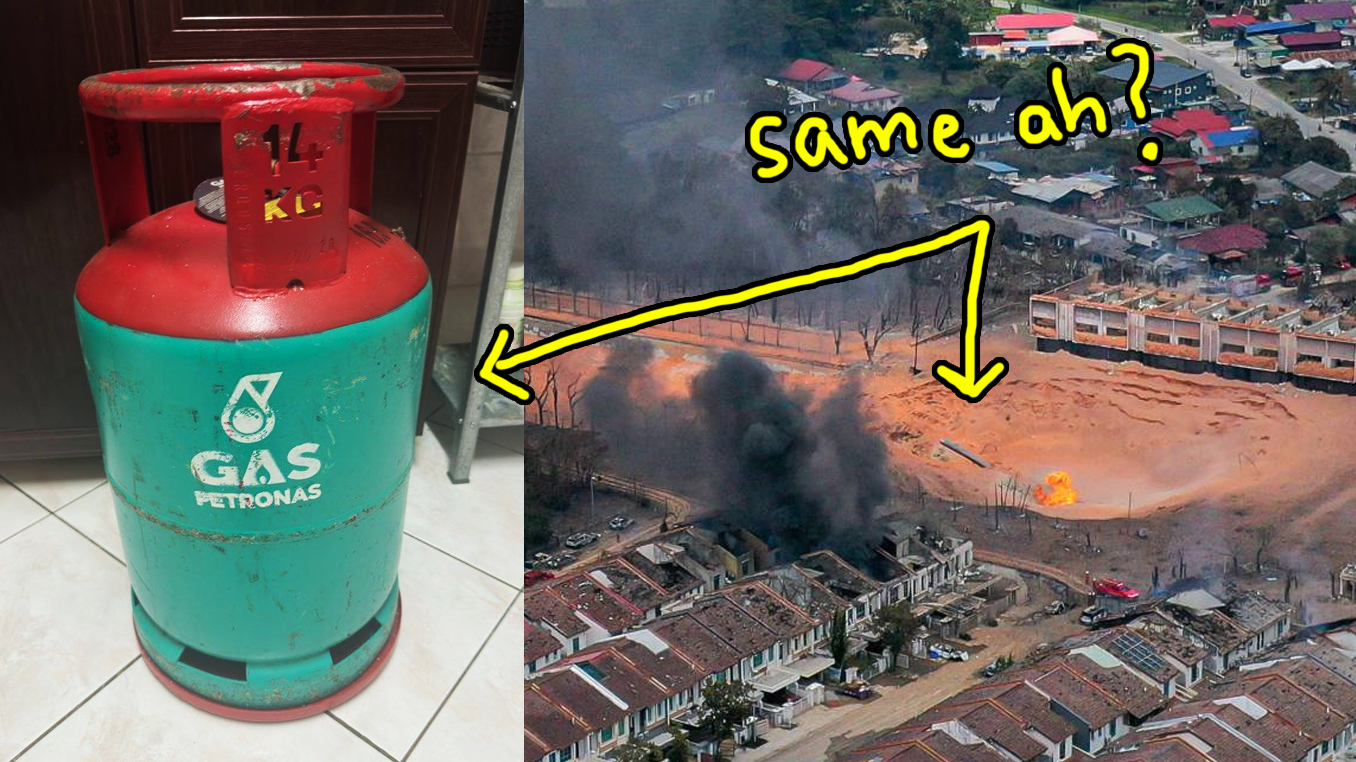If got tong gas at home, then what are the gas pipelines in Putra Heights for?
1 day ago
On April 1st, Putra Heights got a wake up call no one was ready for. And no, it wasn’t some April Fools prank. At 8:10 a.m., a gas pipeline exploded sending a fireball blasting up to 20 stories high. The aftermath was pure chaos. Cars turned into molten piles, homes were wrecked and people were hurt. And all to the backdrop of wailing sirens and scrambling evacuations.
By the time the rest of Malaysia was having their morning kopi, news outlets and social media were already flooded with photos and updates on the rescue efforts. But in the middle of all this madness, one thing had us scratching our heads.
If you’re like us and the only gas you know is the one in the teal coloured tong used for cooking, you might be a little confused about those big gas pipelines and where all the gas is headed. Well, worry not, we’ve got you covered.
The pipelines shuttle gas used for BIG industries like power plants and SingaporeFirst thing’s first. The gas in those pipelines isn’t the same as the cooking gas in your kitchen. That cooking gas is liquefied petroleum gas (LPG), which is pressurized and stored in those handy little cylinders. The gas in the pipelines, however, is natural gas which is mostly methane. It’s used for a whole pipe-load of things, from generating electricity to powering factories and yes, it even goes to residential areas for heating and air conditioning.
But we’re getting a little ahead ourselves here, so let’s back up to the start of this supply chain. Malaysia gets most of its gas from offshore fields, and the big boss in this game is, ofc, Petronas. As the country’s national oil and gas company, Petronas digs deep into the earth (and under the South China Sea) to extract all this odourless stuff out. But once they’ve got it, it’s not like they chuck it into a tong gas and deliver it to a kedai runcit straightaway.
The gas travels through a network of massive, high-pressure pipelines that stretch across Malaysia. So that’s from offshore platforms to where it’s actually needed. As mentioned previously, that’s power plants, factories, and even to Singapore. Side note, did you know about 40% of Malaysia’s energy comes from natural gas? Apparently cos it’s cleaner or something.
Anyways, Petronas doesn’t just dig up gas, they also own and run a big chunk of the pipelines, especially on Semenanjung turf. There are two kinds of pipelines at play here: transmission pipelines, which ferry gas from offshore sites to big distribution hubs and are managed by Petronas; and smaller distribution networks that send it to the end users. For the last stretch, Gas Malaysia takes over and supplies homes, businesses and factories.
As you would have probably already heard by now, the exploded pipeline was part of Petronas Gas Berhad’s (PGB) main transmission pipeline. So yeah, this wasn’t just some small gas leak ????.
So how does Petronas keep these pipelines in check?To put it to scale, that transmission pipeline we’re talking about is actually a dinosaur level 2,623km network that keeps the country’s gas supply running. It’s called the Peninsular Gas Utilization (PGU) system and it’s maintained by PGB.
Now, we don’t have all the nitty gritty details of what they do, but it does kinda sound pretty top-notch.
The real star of the show is pipeline pigging. No it’s not a literal pig though that would be kinda funny. It’s basically a device they send through the pipes to clear out debris and check for any weak spots. There’s also the Intelligent PIG (yep, a genuinely smarter pig) which uses sensors to scan for things like corrosion, cracks, or any other potential problems all without shutting off the gas.
As impressive as these methods are, we don’t have the exact details on how often these checks are done. But one thing’s for sure, this isn’t the first time Petronas’ pipelines have had some issues. Since 2014, there have been several leaks and explosions, particularly around the Sabah-Sarawak gas pipeline. One time, it was reportedly caused by soil movement.
…..Is that perhaps what happened in Putra Heights?
The facts of the Putra Heights gas pipeline explosionAccording to the preliminary FRD report, the fire was caused by a leak in the gas pipeline, with an estimated 500 meters of it consumed by flames. Right after the explosion happened, emergency services responders were deployed to control the blaze while Petronas technicians isolated the gas pipeline to halt the leak, though the fire continued to burn due to residual gas.
The explosion left over 100 people injured, with 80 victims receiving treatment at government hospitals, and 31 others at private hospitals. Temporary evacuation and medical centers were set up at local temples and mosques and affected areas saw the establishment of an exclusion zone. The fire was eventually contained by 3:45 p.m., but the damage was extensive. 235 premises and 399 cars were affected and a massive crater marked ground zero.
As part of the immediate relief, PM Anwar announced RM2,500 for the victims, with RM5,000 for those whose homes were completely destroyed. The government and Petronas are also working out temporary aid, though full repairs may take over a year. Petronas will also cover the medical costs for those treated at public hospitals.
The horror of this entire incident aside, the underlying tragedy here isn’t just the flames or the damage, it’s the fact that this pipeline was too close for comfort to residential areas in the first place. When you think about it, something like this should’ve never even been allowed. As of right now, investigations are underway to uncover how this happened.
...Read the fullstory
It's better on the More. News app
✅ It’s fast
✅ It’s easy to use
✅ It’s free









